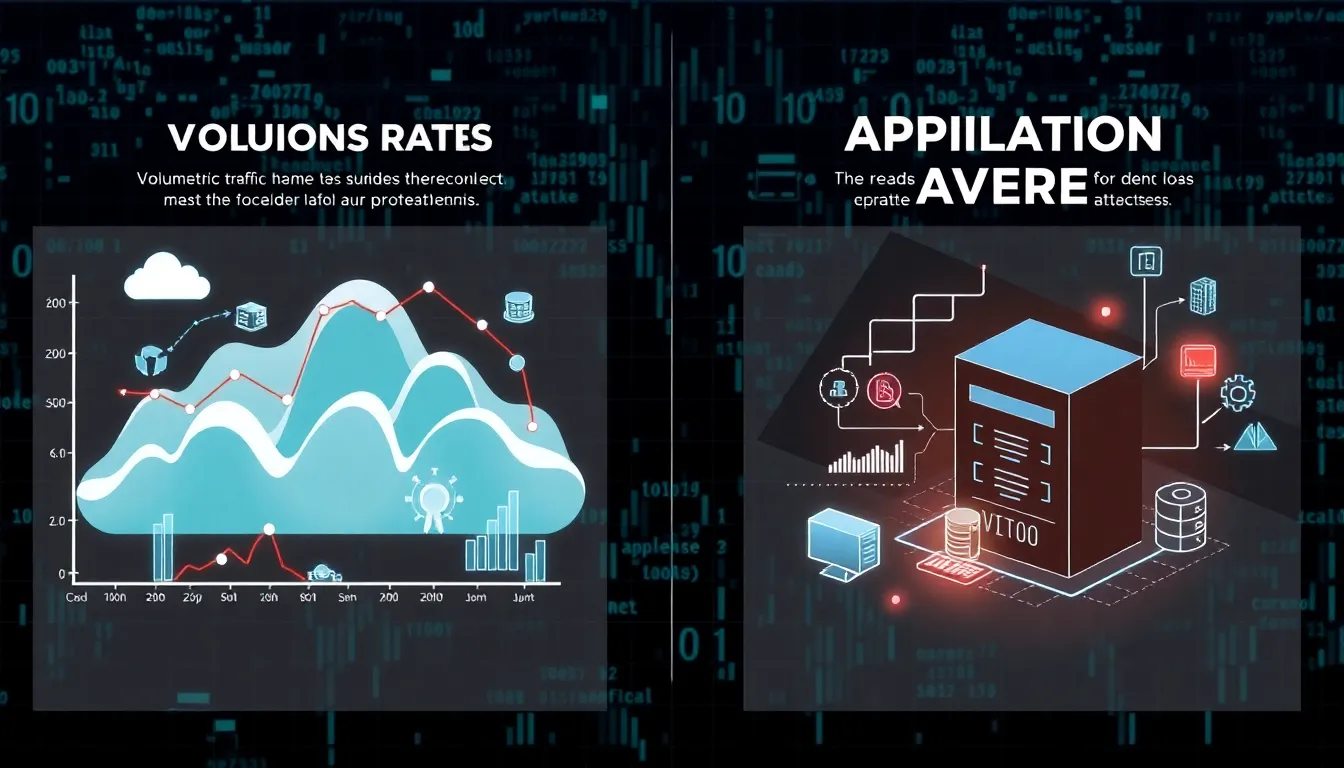In today’s digital landscape, Distributed Denial of Service (DDoS) attacks pose a significant threat to businesses and organizations. These malicious attempts to overwhelm servers can lead to downtime, loss of revenue, and damage to reputation. As cyber threats evolve, understanding the importance of DDoS protection becomes crucial for maintaining online presence and operational integrity.
Implementing robust DDoS protection strategies not only safeguards against potential attacks but also ensures a seamless experience for users. With the right tools and techniques, organizations can effectively mitigate risks and maintain their services. This article will explore the essentials of DDoS protection, highlighting key strategies and best practices that can help defend against these disruptive threats.
Table of Contents
ToggleWhat Is DDoS Protection?
DDoS protection refers to strategies and technologies designed to safeguard networks, services, and applications from Distributed Denial of Service (DDoS) attacks. These attacks overwhelm systems with a flood of traffic, rendering them inaccessible to legitimate users. Effective DDoS protection identifies and mitigates malicious traffic before it impacts the target.
DDoS protection solutions often include various tools and techniques, such as:
- Traffic Analysis: This involves monitoring network traffic patterns to distinguish between normal and malicious activity. By analyzing historical data, organizations can set thresholds that trigger alerts or protective measures.
- Rate Limiting: Rate limiting controls the amount of traffic sent to a server from a single source. It helps prevent a single user or bot from monopolizing resources, ensuring fair access for all users.
- IP Blacklisting: IP blacklisting blocks known malicious IP addresses from accessing a network. Organizations can maintain an up-to-date list of harmful IPs to automatically deny access.
- Traffic Diversion: This technique reroutes potential attack traffic to a scrubbing center, where it is filtered. The clean traffic is then sent to the intended destination, minimizing disruption.
- Web Application Firewalls (WAFs): WAFs monitor and filter HTTP traffic to and from web applications. They provide an additional layer of security by intercepting malicious requests before they reach the server.
Implementing DDoS protection requires an integrated approach that combines these strategies. Organizations should evaluate their specific needs, potential attack vectors, and the scalability of the chosen solutions to ensure robust protection against evolving cyber threats.
Types of DDoS Attacks

Understanding the various types of DDoS attacks helps in formulating effective protection strategies. Two primary types include volumetric attacks and application layer attacks.
Volumetric Attacks
Volumetric attacks aim to overwhelm target networks by flooding them with an excessive amount of traffic. This traffic often exceeds the bandwidth capacity of the targeted system, rendering it inaccessible to legitimate users. Examples include UDP floods and ICMP floods, which generate large volumes of data that disrupt normal service. According to the Cybersecurity and Infrastructure Security Agency (CISA), volumetric attacks account for a significant portion of all DDoS incidents. Organizations can mitigate these attacks by implementing traffic monitoring and rate limiting to manage incoming requests effectively.
Application Layer Attacks
Application layer attacks target specific applications or services, exploiting vulnerabilities in their code to disrupt functionality. Unlike volumetric attacks, these focus on the application layer, aiming for a smaller traffic footprint but causing considerable downtime. For instance, HTTP floods send seemingly legitimate HTTP requests to overwhelming systems, causing slow response times or crashes. The Application Security Industry Report notes that application layer attacks are increasing in frequency and sophistication. Preventive measures include employing Web Application Firewalls (WAFs) to analyze and filter incoming traffic, ensuring only legitimate requests are processed.
DDoS Protection Solutions
DDoS protection solutions play a critical role in defending against cyber threats. Organizations can choose from various options tailored to their specific needs.
Cloud-Based Solutions
Cloud-based DDoS protection solutions leverage the power of distributed networks to mitigate attacks before they reach organizational infrastructure. Providers, such as Cloudflare and Akamai, offer scalable resources that can absorb traffic surges during an attack. Benefits include:
- Scalability: Resources automatically adjust to handle high traffic volumes without manual intervention.
- Real-time monitoring: Continuous monitoring detects and responds to threats promptly, minimizing potential downtime.
- Cost-effectiveness: Pay-as-you-go models reduce upfront costs, making it economically viable for businesses of all sizes.
These solutions often integrate with existing systems, enhancing security without disrupting operations.
On-Premises Solutions
On-premises DDoS protection solutions involve deploying hardware and software within an organization’s network. This approach offers direct control over resources and configurations. Key features include:
- Customization: Tailored settings allow organizations to create specific rules and policies according to their unique infrastructure.
- Immediate response: Local hardware can detect and mitigate threats instantly, reducing latency during an attack.
- Regulatory compliance: On-premises solutions help organizations meet industry-specific security regulations by keeping sensitive data within their control.
While this option may require higher upfront investments and ongoing maintenance, it provides a robust defense mechanism for organizations with specific compliance needs.
Best Practices for Implementing DDoS Protection
Implementing effective DDoS protection involves several best practices to ensure robust defenses against potential attacks.
- Conduct Regular Risk Assessments
Regular risk assessments identify vulnerabilities within networks. Understanding potential attack vectors enables organizations to tailor their DDoS protection strategies effectively.
- Deploy Redundant Infrastructure
Redundant infrastructure enhances resilience against DDoS attacks. By distributing resources across multiple locations, organizations mitigate the impact of localized attacks.
- Utilize Traffic Analysis Tools
Traffic analysis tools monitor data flow in real-time. These tools distinguish between normal and malicious traffic, enabling prompt response to potential threats.
- Implement Rate Limiting
Rate limiting controls the amount of traffic from a single source. This measure prevents overwhelming systems and helps maintain service availability during an attack.
- Incorporate IP Blacklisting
IP blacklisting blocks traffic from known malicious addresses. Continuous updates to the blacklist ensure that new threats are accounted for, enhancing overall security.
- Leverage Web Application Firewalls (WAFs)
WAFs filter and monitor HTTP traffic. They protect web applications by detecting and blocking attack attempts based on predefined rules, safeguarding system functionality.
- Engage with a DDoS Mitigation Service
Partnering with a DDoS mitigation service provides additional layers of protection. These services specialize in identifying and neutralizing attacks quickly, minimizing potential downtime.
- Establish an Incident Response Plan
An incident response plan outlines procedures for addressing DDoS attacks. This plan should include roles, responsibilities, and communication strategies to ensure efficient management during an attack.
- Educate Employees on Security Practices
Employee education on security practices promotes awareness. Training staff to recognize signs of potential DDoS attacks contributes to a stronger security posture.
- Test and Update Protection Measures Regularly
Regular testing and updating of protection measures verify their effectiveness. Simulating DDoS attacks helps organizations assess their readiness and capabilities to respond to real threats.
Implementing these best practices enhances an organization’s ability to protect against DDoS attacks effectively. By tailoring strategies to specific needs and continuously improving defenses, businesses can safeguard their online presence and maintain operational integrity.
DDoS protection is essential for any organization striving to maintain a secure online presence. As cyber threats evolve businesses must stay proactive in implementing effective strategies. By understanding the different types of DDoS attacks and employing tailored solutions organizations can significantly reduce their risk of disruption.
Investing in robust DDoS protection not only safeguards against potential revenue loss but also preserves brand reputation. Regular assessments and updates to security measures ensure defenses remain strong against emerging threats. Ultimately a comprehensive approach to DDoS protection empowers businesses to operate confidently in the digital landscape.



